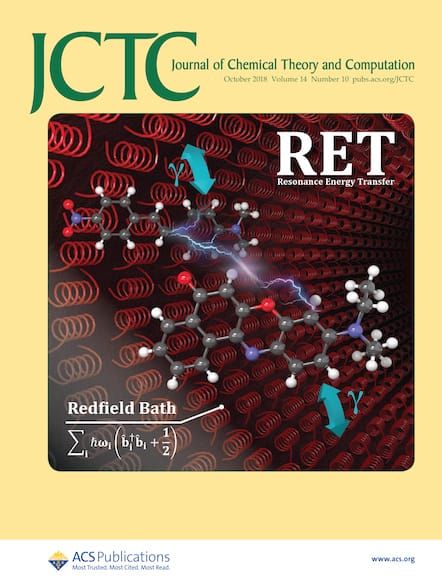基于约束的轨道优化激发态的非正交构型相互作用:理论光化学的通用方法。
IF 5.5
1区 化学
Q2 CHEMISTRY, PHYSICAL
引用次数: 0
摘要
我们介绍了COOX的非正交组态相互作用(NOCI)方案,这是我们最近开发的基于约束的轨道优化激发态方法[Kussmann et al.]。j .化学。理论。第一版。[j],[2024, 20, 8461],通过约束密度泛函理论实现电子激发态的定向变分优化。与基于ΔSCF方案的轨道优化方法相比,COOX是一个更可靠的NOCI参考构型来源。NOCI-COOX的多功能性和稳定性体现在全e-多烯的21 ag态、锥形交叉点、核心激发和其他挑战传统线性响应时变DFT方法的情况下,并通过我们最近的e-COOX嵌入方案(Lemke等人)对复杂分子或体环境中光活性物质的NOCI-COOX处理进行了示例计算。理论物理。化学。化学。理论物理。[205,27,12161]以及极化连续统模型。本文章由计算机程序翻译,如有差异,请以英文原文为准。
Nonorthogonal Configuration Interaction of Constraint-Based Orbital-Optimized Excited States: A Versatile Method for Theoretical Photochemistry.
We introduce a nonorthogonal configuration interaction (NOCI) scheme for COOX, our recently developed constraint-based orbital-optimized excited state method [Kussmann et al. J. Chem. Theory. Comput., 2024, 20, 8461], which enables a targeted variational optimization of electronically excited states through constrained density functional theory. COOX is shown to be a more reliable source of NOCI reference configurations compared to orbital-optimized methods based on the ΔSCF scheme. The versatility and stability of NOCI-COOX are illustrated for the 2 1Ag state of all-E-polyenes, conical intersections, core excitations, and other cases that are challenging to traditional linear-response time-dependent DFT approaches, and exemplary calculations for the NOCI-COOX treatment of photoactive species in complex molecular or bulk environments by virtue of our recent e-COOX embedding scheme [Lemke et al. Phys. Chem. Chem. Phys., 2025, 27, 12161] as well as polarizable continuum models are presented.
求助全文
通过发布文献求助,成功后即可免费获取论文全文。
去求助
来源期刊

Journal of Chemical Theory and Computation
化学-物理:原子、分子和化学物理
CiteScore
9.90
自引率
16.40%
发文量
568
审稿时长
1 months
期刊介绍:
The Journal of Chemical Theory and Computation invites new and original contributions with the understanding that, if accepted, they will not be published elsewhere. Papers reporting new theories, methodology, and/or important applications in quantum electronic structure, molecular dynamics, and statistical mechanics are appropriate for submission to this Journal. Specific topics include advances in or applications of ab initio quantum mechanics, density functional theory, design and properties of new materials, surface science, Monte Carlo simulations, solvation models, QM/MM calculations, biomolecular structure prediction, and molecular dynamics in the broadest sense including gas-phase dynamics, ab initio dynamics, biomolecular dynamics, and protein folding. The Journal does not consider papers that are straightforward applications of known methods including DFT and molecular dynamics. The Journal favors submissions that include advances in theory or methodology with applications to compelling problems.
 求助内容:
求助内容: 应助结果提醒方式:
应助结果提醒方式:


